Did artists love Christmas? Well, if one thinks of the countless number of works that have to do with the celebrations of the birth of the Child Jesus, such as the Nativity, the Adorations of the Shepherds, and the Adorations of the Magi, one might think of an affirmative answer. Or, think of the various depictions of preparations for the most beautiful holiday of winter: depictions of joyful children and adults around the Christmas tree, studded with a thousand little lights that make the atmosphere at home even more magical. A joy and magic that has always infected young and old, because after all, with Christmas we all become children again. The anticipation of Christmas night is experienced in most cases cheerfully, as families gather, gifts are exchanged, many “Merry Christmas” echo in the air, delicacies and sweets are prepared to be eaten in company: everything smells festive. Therefore, works depicting the coming of Christ also create that aura of magic and merriment that invades the observer’s soul, since since since ancient times the birth of the Child, though intimately illustrated, gathered around it many people, who came even from afar to celebrate the happy event. Christmas is thus quintessentially a celebration of being with family, of the warmth and affection of those closest to us.
However, with the advent of consumerism, the true meaning of Christmas has somewhat waned, as the rush for gifts, the glitz of decorations and accessories have become almost primary, remembering to a lesser extent how much the birth of the Baby Jesus refers on the contrary to humility and simplicity. If one thinks of a link between consumerism and art, Andy Warhol, pseudonym of Andrew Warhola (Pittsburgh, 1928 - New York, 1987), one of the most influential artists of the twentieth-century art scene, immediately springs to mind. Throughout his output, Warhol elevated consumerism to a symbol of modern times, presenting consumer products, celebrities from the world of entertainment, and advertisements in his works. And the center of the world of consumerism was America, a country whose greatness, according to Warhol, consisted in its having “initiated the custom whereby the richest consumer buys essentially the same things as the poorest,” since “as you watch on television the advertisement of Coca-Cola you know that even the president drinks Coca-Cola, that Liz Taylor drinks Coca-Cola, and that you too can drink it” because “a Coke is a Coke and no amount of money can afford you a better Coke than the one the bum on the street corner drinks,” as the artist wrote in his Philosophy of Andy Warhol.
The artist of Coca Cola, Campbell’s Soup, Brillo boxes and Marilyn Monroe loved Christmas deeply and in particular believed in the American Christmas as a kind of collective myth, an anthropological fantasy in which everyone tries to participate in an extremely avid way. It is probably the most “popular” holiday of the year, as everyone throws themselves headlong into the preparations, gifts, and decorations, and everyone tries to follow the philosophy of the prettiest and the flashiest in order to “outdo” others. In this sense, Warhol portrays the American Christmas with everything included in it: from trees to wreaths, from greeting cards to characters that belong to the Christmas imagery. However, according to the testimony of those who knew him, Andy Warhol was very fond of giving Christmas gifts and was quite generous to his friends; moreover, in pure Christmas spirit, he loved to surround himself with his loved ones and attached great importance to friendship and solidarity. For him, too, the holiday season was a time to reconnect with his loved ones, to experience this time of year in company.
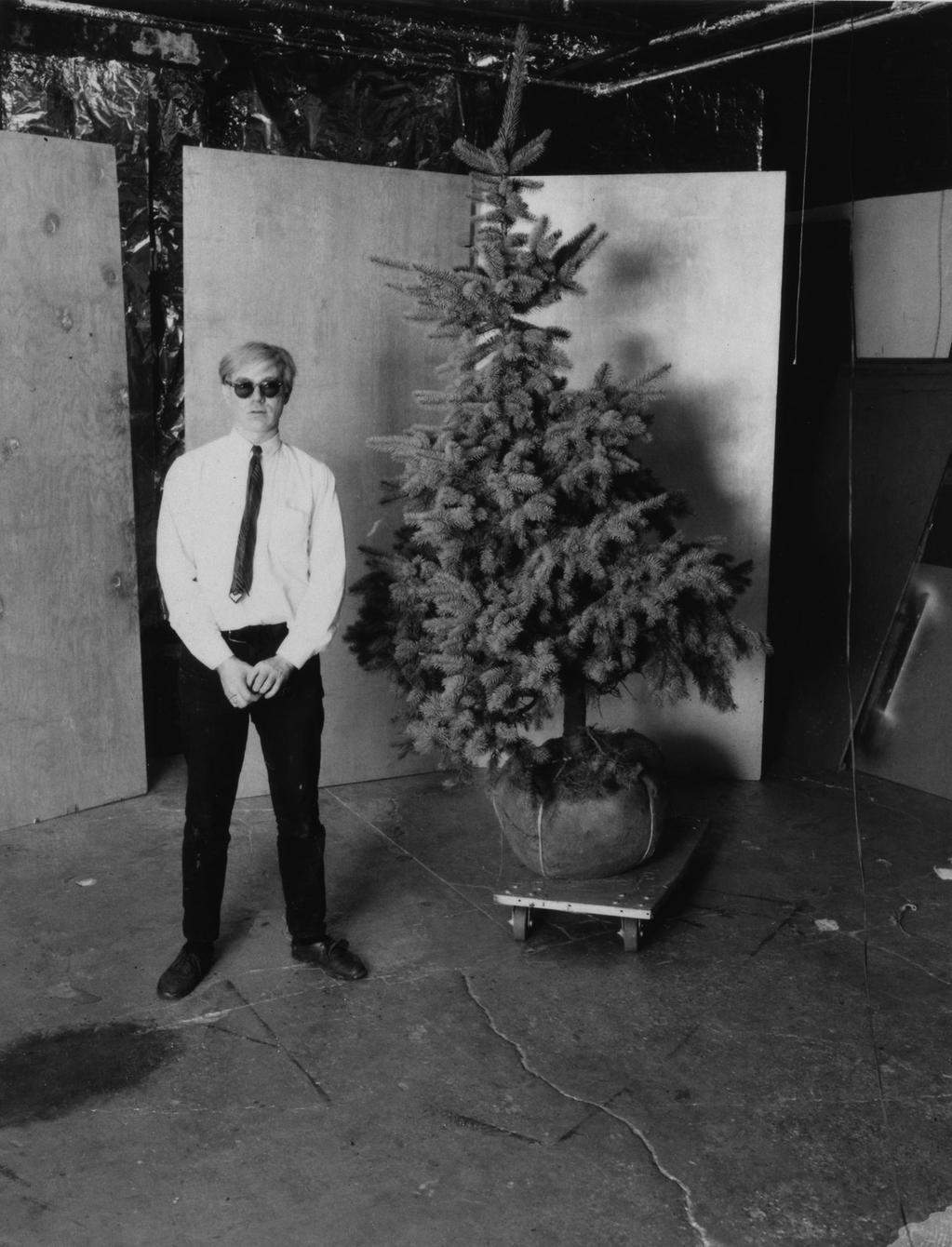 |
| Andy Warhol poses with a Christmas tree. |
Contrary to what one might think, the artist was very religious-a little-known aspect of his passion for Christmas that stems from his origins. The son of Julia and Andrej Warhola, immigrants of Ruthenian-Carpathian descent from the former Czechoslovakia, Andy lived in a Pittsburgh ghetto where the language and some of the culture and history of his country of origin were preserved, including the Byzantine Catholic religion. Among other things, Ruthenian Byzantine Catholicism observed the ancient Byzantine calendar, according to which Christmas was celebrated not on December 25 but on January 7. As a result, his family was very practicing: prayers were said before every meal and they went to mass every Sunday, despite the six-mile distance from the church. According to the testimony of Paul, the Warhola’s oldest son, if “you didn’t go to church on Sunday you couldn’t go out all day. And we had no radio or anything else. So what did we do? Mother would tell us stories”; and again the second son, John, recalled that their mother taught them that “going to church was better than owning material things.”
Andy Warhol’s earliest religious-themed drawings date back to the time when the artist was working in New York as an advertising designer for Tiffany & Co.: he made a series of drawings for Christmas cards. In particular, he chose as his theme the Star of Wonder, of which he executed many variations: a star-shaped design that could be composed of various elements, such as the rose, a flower associated with the Virgin Mary, or colorful birds. Indeed, among the variants of the Warholian Star of Wonder are the five-pointed star formed of red roses and the one consisting of brightly colored birds intersecting one another. On the back of the card appeared the words “Designed by Andy Warhol for Tiffany & Co.” while below the design stood the artist’s first and last name written by his mother in old-fashioned handwriting. The Star of Wonder was derived from the refrain of a popular Christmas carol that read, “Star of wonder, star of night, star with royal beauty bright....” These illustrations date back to the late 1950s.
 |
| Andy Warhol, Christmas Tree (1957; color print on cardboard, 33.9 x 49.6 cm; Private collection) |
 |
| Andy Warhol, Star of wonder (1960; lithograph, 129 x 164 mm; Private collection) |
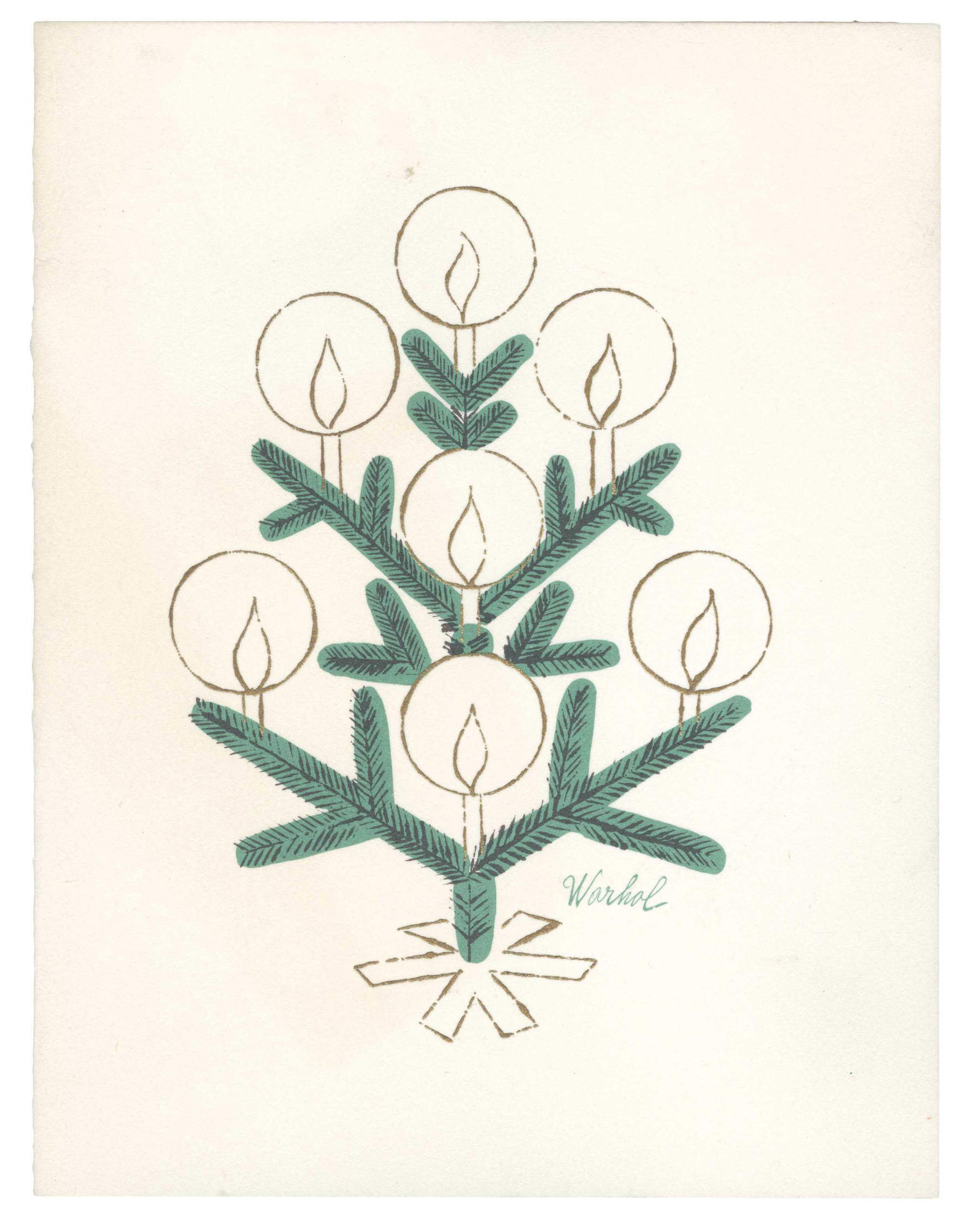 |
| Andy Warhol, Tiffany & Co. Christmas Card (ca. 1956; color print on folded card stock, 14 x 10.8 cm; Private collection) |
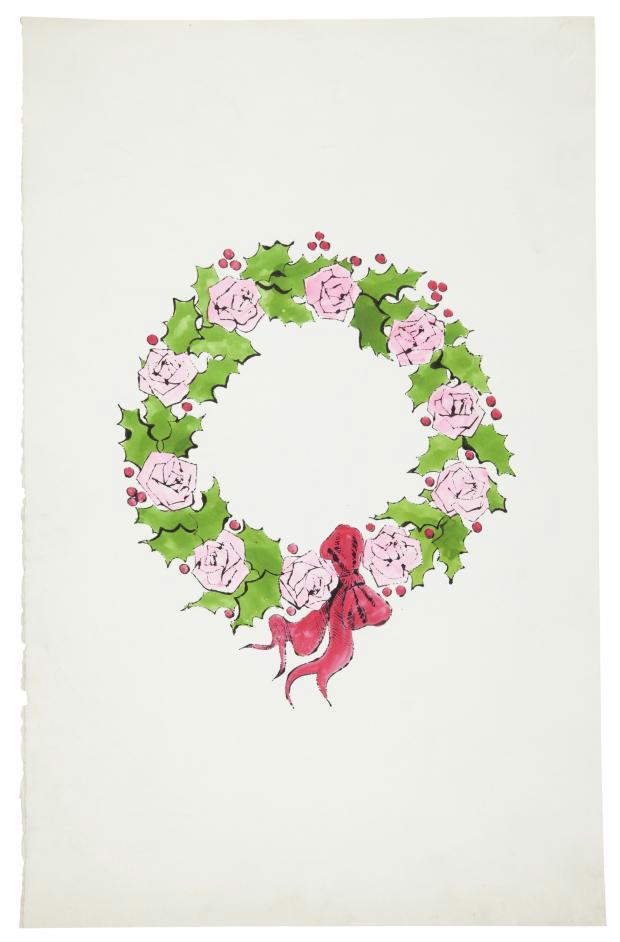 |
| Andy Warhol, Garland (ca. 1956; ink and watercolor on paper; Private collection) |
Also dating from those years is a drawing depicting anAdoration of the Magi and another that features a hand on whose palm rests a hut with a Christmas crib, an image that combines Warhol’s originality with the art of the past. Inside the hut is the seated Madonna with the baby Jesus on her lap; the entire image is gold-colored, including the little angel flying above the hut and the comet star illuminating the scene. The fingers of the hand on which the nativity rests are slightly curved as a sign of protection toward the Virgin and Child. This image would also allude to Christmas ceremonies very familiar to the artist, as learned during his childhood and adolescence when he was still living with his parents. Throughout his work as an advertising graphic designer, Warhol illustrated cards with angels, garlands, trees composed of cherubs, animals, musical instruments, and cornucopias. He worked for Tiffany & Co. from 1956 to 1962, when he began making the famous Campbell’s Soup. There was even a recent illustrated book within which the drawings and paintings produced by the artist on the theme of Christmas were reproduced, entitled Greetings from Andy: Christmas at Tiffany’s.
In the early 1980s, the artist returned to the Christmas theme by executing a series of paintings depicting Poinsettias, the plants better known as "poinsettias," colored in bright and even dark tones to highlight how popular this flower is during this holiday season. A plant found everywhere and generally given as a token of good wishes, around which a real business has been created.
Again, dating back to 1981 is the portfolio entitled Miths that contains ten silkscreens of iconic legendary characters, such as Superman, Dracula, Uncle Sam, Howdy Doody (famous character starring in the American children’s TV show of the same name). And of course, Santa Claus, our very own Santa Claus, could not be missing. A roundup of imaginative characters who have become symbols of world culture, deities of a mythology of modern imagination. World-renowned figures derived from film, television and legends of the past.
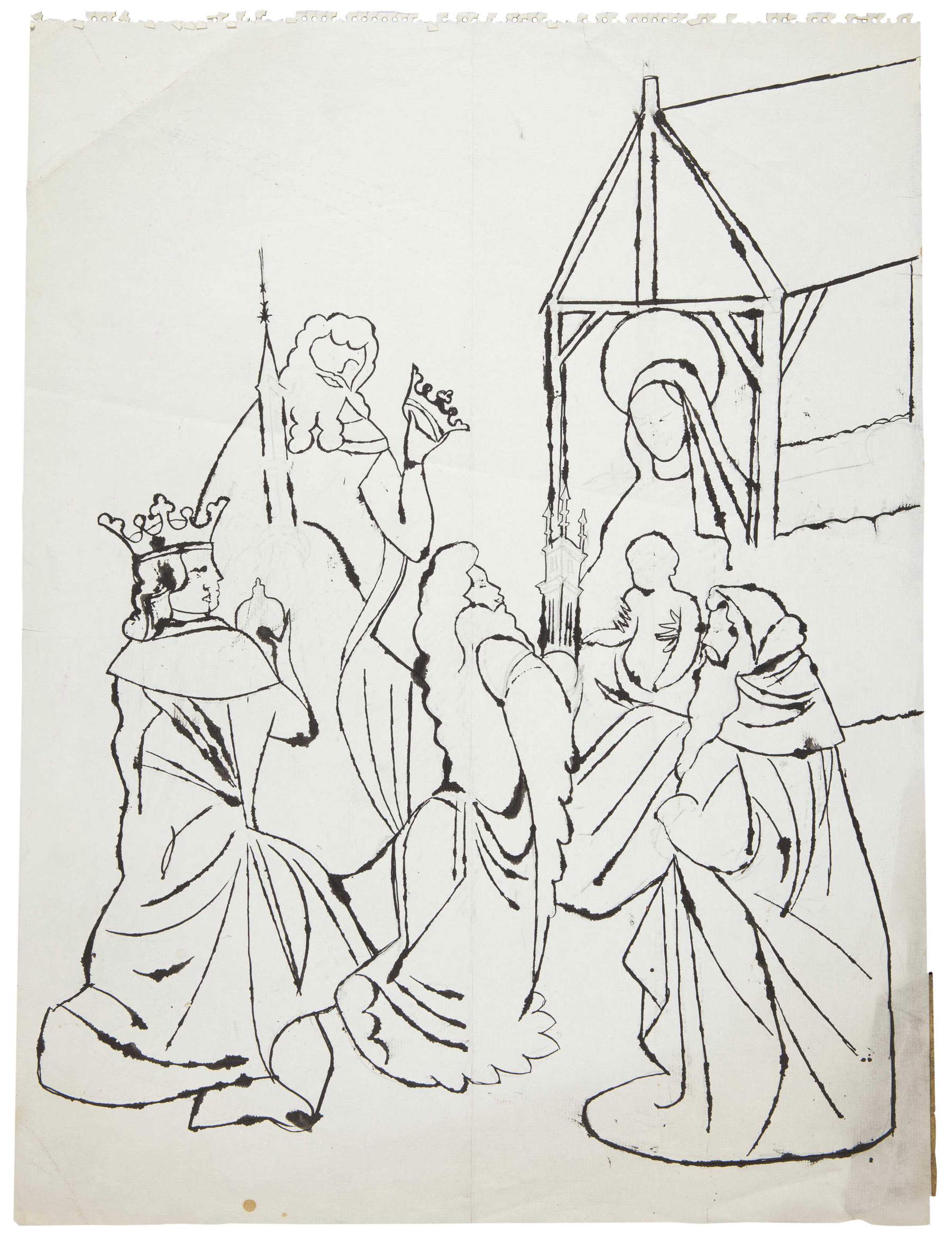 |
| Andy Warhol, Adoration of the Magi (c. 1954; ink on paper, 61 x 46.4 cm; Private collection) |
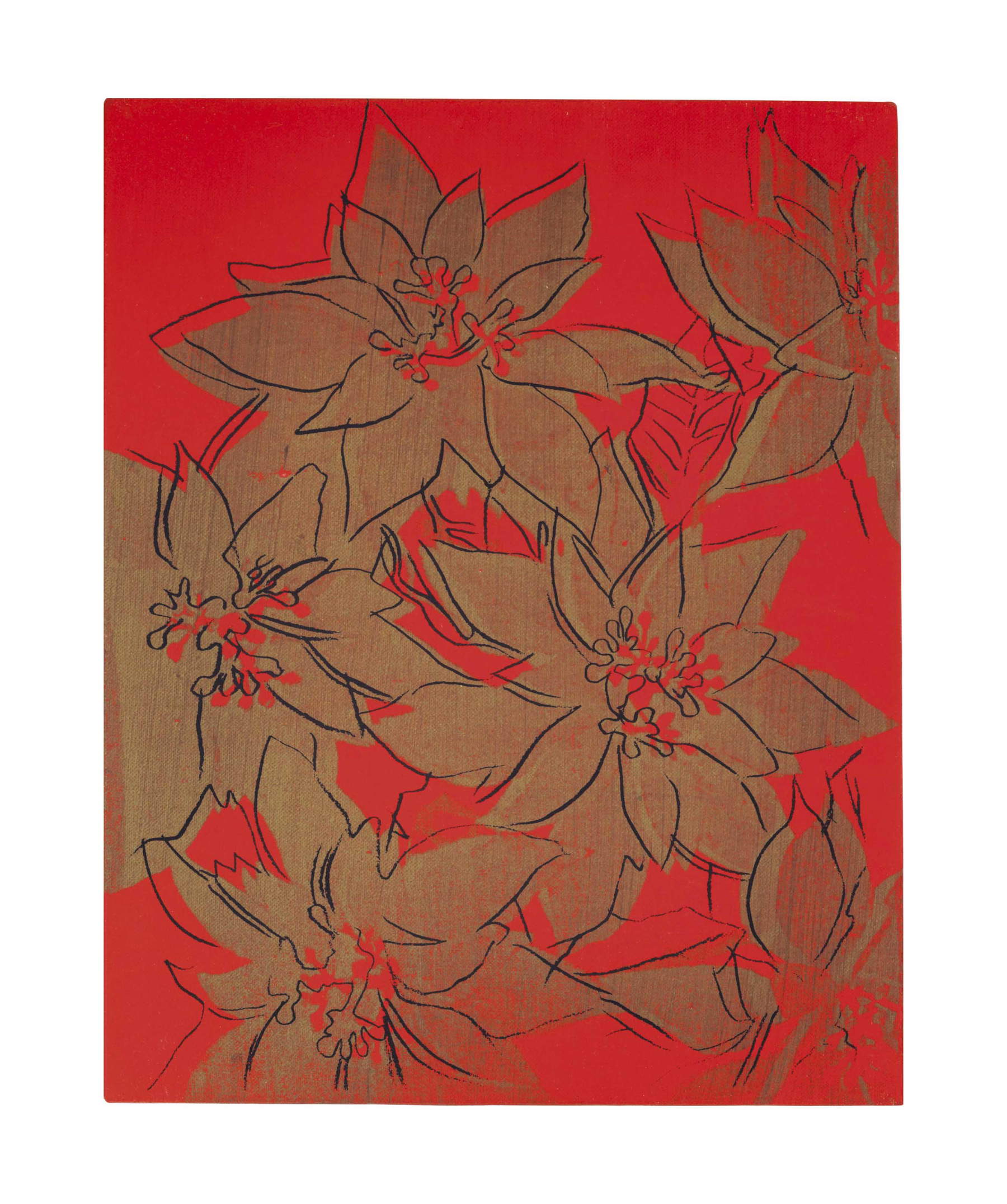 |
| Andy Warhol, Poinsettias (1982; synthetic polymers and ink on canvas, 35.6 x 27.9 cm; Private collection) |
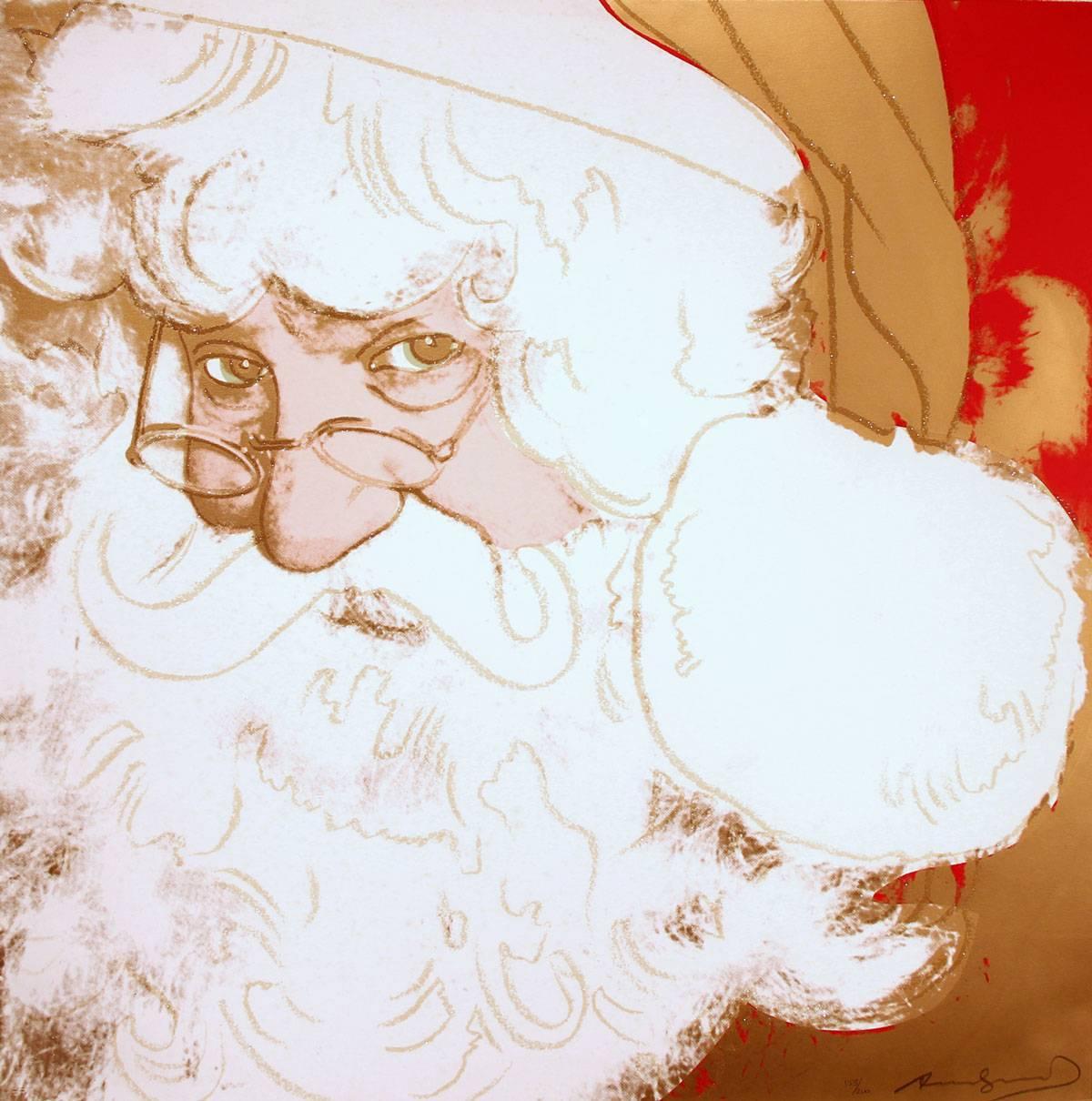 |
| Andy Warhol, Santa Claus, from Myths series (1981; print, 96.5 x 96.5 cm; Various locations) |
 |
| Andy Warhol and Truman Capote on the cover of High Times. |
Andy Warhol could be witty, as well as quite eccentric; he played with his appearance and tried not to take himself too seriously. It is from 1978 a cover of High Times in which Andy appears in a Santa Claus outfit in the company of U.S. writer and screenwriter Truman Capote (New Orleans, 1924 - Bel Air, 1984), the latter dressed as a little girl with a large lollipop in her hand. The witty snapshot testifies to the friendship that developed between the two: as soon as he arrived in New York, Warhol had a real mania for the author of Breakfast at Tiffany’s and telephoned him every day; he rejected him, calling him “one of those hopeless people to whom nothing will ever happen,” until one Christmas Warhol sent him a gold shoe painted to him.
Probably, with regard to his Christmas-themed works, he was strongly influenced as a child by the magical depictions of Norman Rockwell (New York, 1894 - Stockbridge, 1978), author of more than three hundred covers of The Saturday Evening Post, which he produced from 1916 to 1963. Rockwell depicted America politically and culturally in his illustrations with a strong dose of irony. His truly realistic Christmas depictions are numerous: examples include one showing a man grappling with decorating the tree or the whole family arriving at grandma’s house holding many gift packages in their hands and a Beagle breed dog running toward them. Or Santa Claus as he is busy reading at his desk a multitude of little letters or the December 1927 cover that features a big smiling Santa Claus holding a baby in the fingers of his hand. Scenes of Christmas life that were almost common to all Americans, from the wealthiest to the least affluent, for Christmas, as Andy Warhol stated, is the most pop holiday there is. It is a holiday that warms the heart and makes everything more magical.
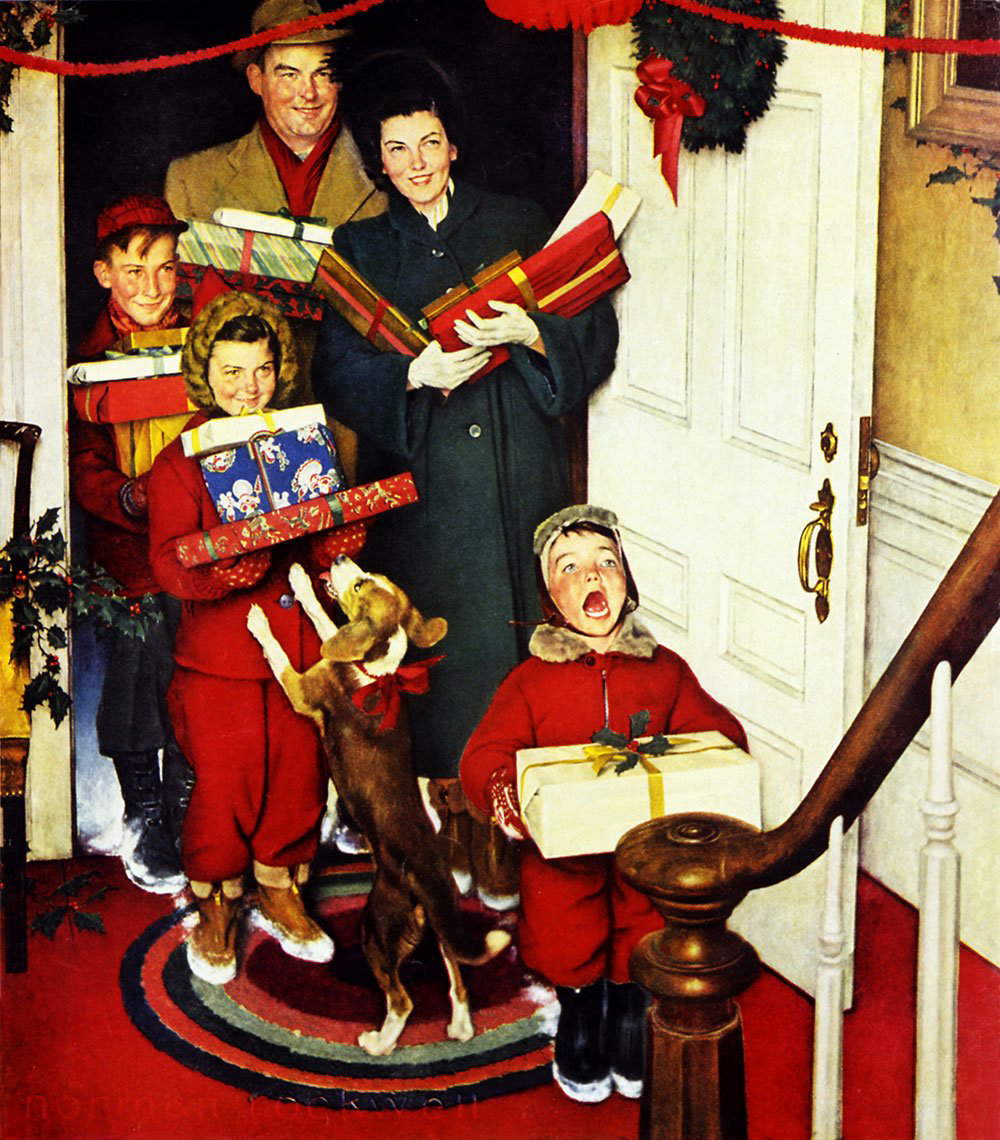 |
| Christmas illustration by Norman Rockwell |
 |
| Christmas illustration by Norman Rockwell |
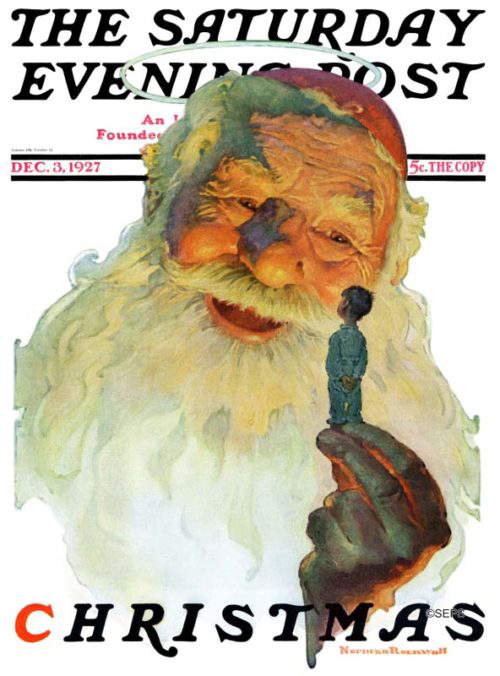 |
| Norman Rockwell, Cover of the Saturday Evening Post, December 3, 1927 |
Warning: the translation into English of the original Italian article was created using automatic tools. We undertake to review all articles, but we do not guarantee the total absence of inaccuracies in the translation due to the program. You can find the original by clicking on the ITA button. If you find any mistake,please contact us.